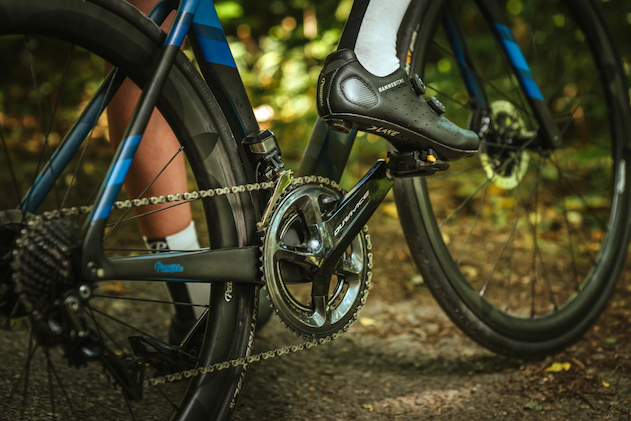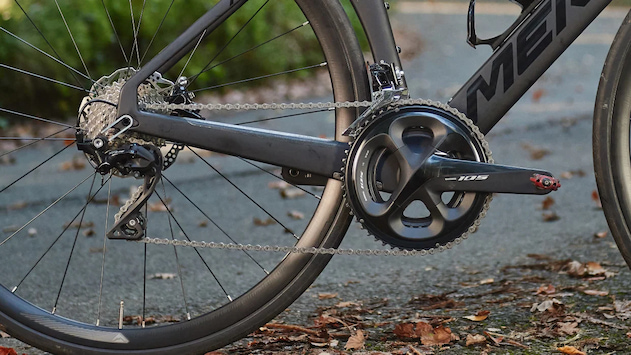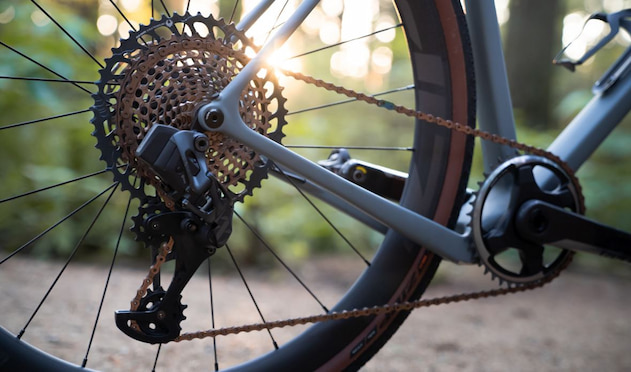A Guide to Finding the Ideal Groupset
Whether it’s done recreationally, as a means of commuting, or even professionally, cycling’s an intensely popular activity that can also be an incredibly technical one.
The purely utilitarian, freewheeling single-speed bikes that were once as common as cobblestones, have long since been replaced by pedal-powered platforms with drivetrain components that are not only engineered for specific riding surfaces, but even for the types of riding that cyclists do on them.
Together, these drivetrain components are called groupsets, and they’re comprised of everything other than a bike’s frame, fork, saddle, and wheels. More specifically, groupsets consist of all the interconnected mechanical parts on a bike that enable it to GO or to STOP. It’s the variations in their constituent components, however, that determine whether a bike is best suited for road, gravel, endurance, or even just plain leisurely riding.
It’s no surprise then that when you’re looking to make serious improvements in your bike’s performance, you have to start with the groupset. Some components invariably have a bigger impact on performance than others though, so let’s take a look at what groupsets consist of, and see how a component upgrade can improve your entire riding experience.
Modern Groupset Innovations
Although cyclists and non-cyclists alike are quick to marvel at how much the materials and aerodynamics of bike frames have changed their performance, it’s the advancements in groupset design that have changed cycling the most. The range of customization that’s possible with modern bike groupsets and drivetrain components has completely transformed cycling, as mechanicals have become lighter, more efficient, and more sophisticated than they’ve ever been. From electronic- and wirelessly-activated gear changers, to hydraulic disc brakes, the sheer scope of groupset innovations has been nothing but astounding, allowing cyclists to squeeze every possible gram and kilowatt of performance out of their bikes.
Typical Groupset Components
Advanced drivetrains and groupsets consist of the following components:
- The chainset. This is the single-, double-, or triple-sprocketed chainring that the bike’s crankarms and pedals are attached to, and is used to make major gear-change adjustments.
- The bottom bracket. This is the bearing-encased, free-rotating cylinder that fits inside the frame that holds the chainset.
- The chain. Roller chains, made from a variety of metals ranging from corrosion-resistant stainless steel to ultra-lightweight titanium, are used to transfer power from the chainset to the cassette.
- The cassette. Consisting of up to 13 cog gears, this is the one-piece sprocket cluster that’s mounted on the rear wheel that’s turned by the chain, and is identified by the number of teeth of its smallest and largest cogs.
- The derailleurs. These are the two frame-mounted mechanisms adjacent to the chainset and cassette, that enable gear changes by moving the chain from one sprocket or cog to another.
- The brakes. Either rim,- or hydraulic disc-type brakes are typically mounted on the front and rear wheels of bikes, with drum-type brakes mounted inside the wheel hub of some types of commuter bikes.
- Control shifters. Shifter levels controlling both gear changes and braking pressure are mounted on the handlebars, and are activated either by wires or wirelessly.
For most riders, the decision to buy new cycling components online generally means upgrading from either standard or entry-level drivetrain parts to ones that are more consistent with the evolution of their riding style. And while all of these components can be purchased individually, they’re not always compatible between the different groupset manufacturers.
Companies like Shimano, SRAM, and Campagnolo are the cycling industry’s premier groupset manufacturers, and you can purchase upgraded, or complete groupset kits made by any of these companies with total assurance of component compatibility. Comprehensively packaged drivetrains are a costlier option than buying individual bike components, but most cyclists quickly realize that the advantages were well worth the expense.
Groupset Performance Levels
Regardless of your type of bike or riding style, buying groupset kits that put all the correctly sized and matched bicycle components in a single box is going to make the most noticeable difference in how your bike feels. And not surprisingly, the more advanced the groupset package is, the more appreciable the difference is going to be.
Groupset manufacturers generally rate their components according to a well-defined, 3-tiered performance hierarchy:
- Entry level. For budget-minded cyclists or ones who are still in the process of discovering which style of riding they prefer, these groupsets are commonly made up of steel components and feature 8 – 10 speed gearing cassettes, mechanical shifters, and rim-mounted brakes.
- Performance level. For cyclists who want to push their riding limits and are prepared to pay more for the technical and weight advantage of precision aluminium components, this level offers a significant step up with 11 – 12 speed gearing cassettes, mechanical or electronic shifters, and rim-mounted or hydraulic disc brakes.
- Professional level. For world-class performance, these high-end, groupsets for sale are comprised almost entirely of titanium components with ceramic bearings that support 12 – 13 speed electronic gearing cassettes, electronic shifters, and hydraulic brakes.
There are also groupset sub-categories that denote basic, mid-range, and advanced component options that allow cyclists to create completely bespoke bike configurations. Some drivetrain features and functionalities are simply more desirable than others though, and the ability to fine-tune a bike to match specific requirements is one of the main advantages of being able to buy bike components and groupsets online.
The Urgency for a New Groupset
Let’s be honest: while the desire for more precise gear shifts and more positive braking are the primary goals of upgrading a groupset, it’s impossible to exclude cost as a factor in how cyclists prioritize those upgrades. Groupsets can be expensive, which is why performance upgrades are easiest to realize when they’re combined with an urgent necessity that can justify the expense, including:
- The need to replace existing bike gear components that are worn out or broken;
- The physical requirement for lighter, more efficient drivetrain components; and,
- The desire for more durable, standard-sized components.
The truth is, you can easily double or triple the useable lifespan of your bike simply by replacing aging, defective, or obsolete groupset components that have themselves become too costly or tedious to maintain. In most cases, upgrading an older bike frame to an entry, or even performance-level groupset can be done for only a fraction of the cost of purchasing a brand-new bike, and the benefits in performance will be exactly the same.
The Final Word
At the end of the day, even though the decision to upgrade a drivetrain can seem like a huge commitment of capital, the difference that can be realized in component strength and reliability, in addition to performance, is nothing short of impressive. And although a complete installation would constitute a major overhaul, the cyclist who’s capable of performing the upgrade themselves will ultimately save money in the long term on labour, along with the cost of maintaining older, less advanced components.
Regardless of whether it’s for commuting or competition, modern, high-tech bike groupsets and drivetrain components will bring out the best in any bike. It’s the perfect way to breathe new life into your bike’s performance if you’re an avid cyclist, and you’ll reap the benefits of it for years.







